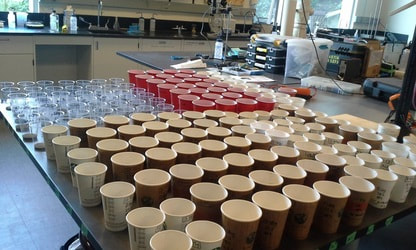|
To answer my research question, a particle size analysis was conducted on the samples using the dry sieving method.
Below is the step-by-step process used:
To access the graphs extracted from this analysis, please email me at [email protected]
1 Comment
|
Jhanelle WilliamsJhanelle is an environmental science student at Quest University with a focus on soil and water quality. She is excited to work with the Squamish Watershed Society in the estuary soils as this provides the basic understanding for the fate and transportation of contaminants in soils. Furthermore seeing that this a relatively new restoration project, understanding the physical characteristics of the soil is central for advancing in the development of the site. Stay tuned for the interesting research forthcoming! ArchivesCategories |


 RSS Feed
RSS Feed